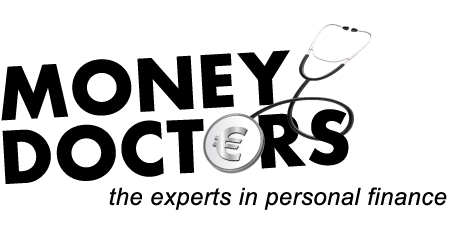Ever wondered where the term “money” comes from ? With the pandemic still at a volatile stage, cash is being less and less used but money is still transacted. John Lowe of Money Doctors gives a brief run through on the origins of money via 20 salient points….Mark Twain once said money is the root of all evil…St Paul described it in a different way… the love of money is the root of all evil… Money has evolved from a simple bartering mechanism to the hugely complicated structures we use in our everyday lives….
- Before money was made of bills and coins, these items were used as currency: conch shells, ivory, clay, live animals and grain. As long as it was divisible and scarce, it could be deemed “money”.
- The name money comes from Middle English: from Old French moneie, from Latin moneta ‘mint, money’, originally a title of the goddess Juno, in whose temple in Rome money was minted.
- The first banks were likely religious temples because the security was always tight.
- The first records of loans, deposits, currency validation and exchange were recorded in the 18th Century BC in Babylon. (Ancient Greece)
- Pythius, a merchant banker from Asia Minor in 5th century B.C. was the first banker on record.
- The term “check” or “cheque” is derived from the game of chess. Putting the king in check means his choices are limited, just like a modern day cheque that limits opportunities for forgery and alteration.
- The Knights Templar between 1118 and 1307 used a cheque system to provide their pilgrims with travel funds. They worked much like modern day travellers cheques.
- The term bankrupt is taken from two words… bancus meaning bench in Latin on which bankers used to ply their trade in the marketplace and ruptus meaning broken – once the banker could no longer trade, the bancus would be broken to signify the banker is out of business.
- The original two currencies of America was the Sterling Pound and the Spanish Dollar. In fact, the first type of U.S. currency to ever be issued was a mere $2,000,000. It was issued in 1775 by the Continental Congress. Every new issue of this currency steadily devalued it against the Sterling Pound, and the Spanish Dollar.
- The $ symbol is derived from the Spanish dollar sign. In 1782, the US considered choosing the Spanish peso as the country’s currency. The abbreviation for the Spanish peso (PS) later transformed into a $.
- The U.S. “$” sign has long been in use to represent foreign currency prior to the the issue of the first U.S dollar in 1875. Not only that, but the “$” symbol never has, nor does it now, appear on any U.S. currency.
- In 1932, wooden bills were temporarily made and used in Tenino, Washington because there was a major cash shortage at the time and wood was readily available.
- The largest numerical bill ever to circulate in the world was 1,000,000,000,000,000,000,000, and it was the Millard Hungarian Pengo, issued in 1946. At the time, it was only worth $.20cents in the U.S.
- The first ATM to ever exist was at Barclays Bank in London, in 1967. It was invented by John Shepherd-Barron while bathing in his tub, or so he claimed. Guess what else? That ATM didn’t charge a fee…
- In 1980 the first ATM came to Ireland – Stillorgan Shopping Centre to be precise and at the Bank of Ireland branch.. and yes yours truly was the junior banker – still in nappies – who took charge of the machine ( basically loading it ! )
- On September 30th, 1980, the U.S. national debt was $907 billion. Fast forward 40 years later, and the U.S. national debt is over $24.95 trillion – trebled in the 8 years of Barack Obama’s presidency from $7.5 trillion to $ 20 trillion…President Trump has only increased it by nearly 25%…. Now that’s what I call a lasting legacy…
- Did you know that money has a short life span? On average a $1 bill lasts only 18 months, a $5 bill will last two years, and a $10 bill will last three years. This is why the U.S. Bureau of Engraving & Printing has to reprint $541 million worth of currency each year.
- Disregard the overall US national debt for a moment and consider that the amount of debt the U.S. owes to China only equates to an average of $10,000 for every American family.
- Americans currently owe about $875 billion in student loans, which is more than our country collectively owes in credit card debt. Student loan debt is increasing at a rate of $2,853.88 per second….
- In Ireland we are moving out of money and into debit & credit cards. For the quarter up to June 2020, there were 123 million contactless card transactions – the lowest for 15 months – but with the contactless payments increased from € 30 to € 50 per transaction, the value was actually up on previous quarters to € 1.9billion. Technology is changing the way we use money to become a paperless coinless facility – just as well… in the current pandemic imagine if we had to wash our hands every time we touched a bank note !

